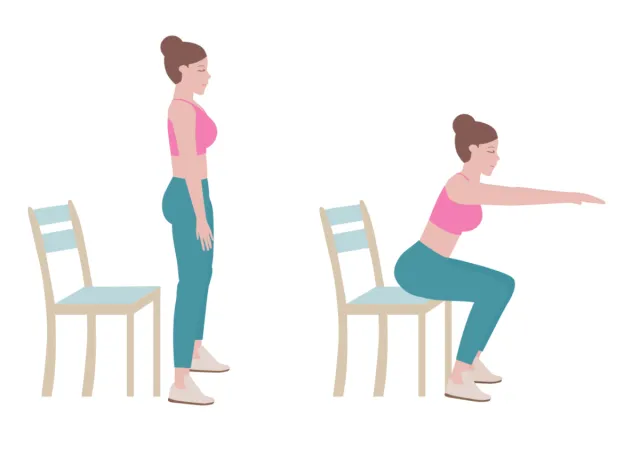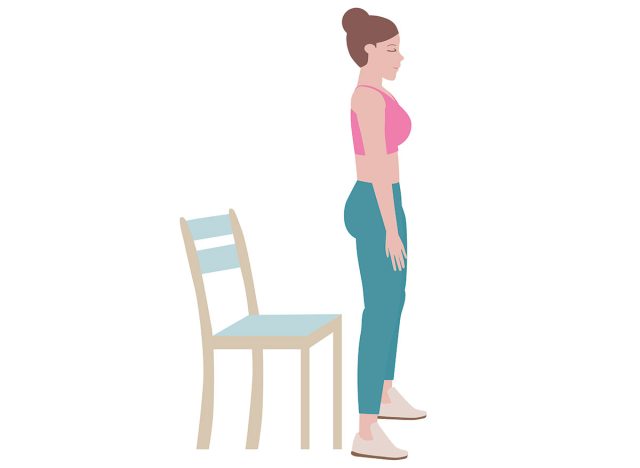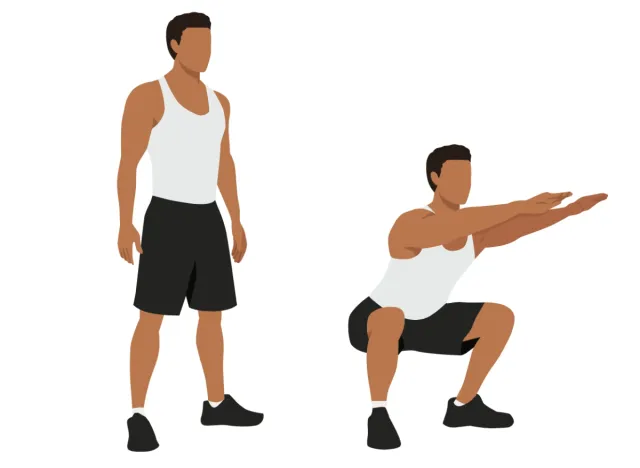The Standing Strength Test That Reveals How Well Your Body Is Aging

If you want a straightforward way to monitor your body’s aging process, there’s one move that delivers instant feedback: the sit-to-stand test. This simple movement taps into your balance, coordination, joint mobility, and overall control. And how well you perform can say a lot about your long-term health, especially as you age.
Why does that matter? Because strength isn’t just for athletes or gym-goers. It’s your foundation for independence, injury prevention, and staying active throughout life. As you age, maintaining strength becomes one of the most important ways to move better, feel better, and live longer.
The best part? You can take the test right now, wherever you’re reading this.
Here’s how it works, how to score your results, and what you can do to improve.
What Is the Sit-to-Stand Test?

The sit-to-stand test is a quick way to measure strength, stability, and functional mobility, three key indicators of how well your body is aging.
If standing up from a chair without using your arms sounds easy, that’s good. It means you’re likely moving well. But if you’re surprised by how difficult it feels, your body might tell you it’s time to address strength and mobility before it becomes a bigger issue.
How to Do the Sit-to-Stand Test
This version of the test uses a chair and a timer. It focuses on how many full repetitions you can complete in 30 seconds using only your legs.
Setup:
- Use a standard chair (about 17 to 18 inches tall) placed against a wall to prevent it from sliding.
- Sit with your back straight, feet flat on the ground, hip-width apart.
- Cross your arms across your chest.
The Test:
- Set a timer for 30 seconds.
- Start the clock and stand up fully, then sit back down with control.
- Repeat as many full reps as possible in 30 seconds without using your hands or swinging your arms.
A proper rep means full hip extension at the top and full contact with the chair at the bottom. Partial reps don’t count. Go for quality first, then speed.
What Your Score Means

This is where things get interesting. Your score gives you a snapshot of your lower-body strength, endurance, and movement quality. Use this ranking to interpret your performance:
- Score 1 – Excellent (21+ reps): You have strong legs, solid mobility, and great endurance. You’re moving better than most and showing no signs of slowing down. Continue your routine, and consider incorporating resistance training to maintain that edge.
- Score 2 – Good (15–20 reps): You’re in a solid spot. Your strength and mobility are holding up well, but there may be some room for improvement. Continue training regularly, incorporating strength, mobility, and balance exercises to elevate your performance.
- Score 3 – Average (10–14 reps): You’re still moving reasonably well, but this range suggests your strength and endurance may be slipping. It’s time to make lower-body training a consistent part of your week. Focus on full-body movements and add some balance work.
- Score 4 – Below Average (<10 reps): This is a warning sign. Fewer than 10 repetitions often indicates declining strength and an increased risk of falls. But this is also your wake-up call. You can improve with the right kind of movement and effort. Start with bodyweight strength and mobility training, and build gradually.
Why This Test Matters
Getting out of a chair might seem basic, but it mimics our daily routine. The difference between doing it well and struggling with it has real consequences.
A strong standing pattern is tied to:
- Reduced risk of falls and injury
- Greater independence as you age
- Improved quality of life
- Better athletic performance (yes, even in your 40s, 50s, or 60s)
The sit-to-stand test is also predictive. Struggling with this movement now can forecast future mobility or strength loss issues. But the beauty is that it’s also fixable. Every rep you do moving forward is a step toward improvement.
How to Improve Your Sit-to-Stand Strength

You don’t need a gym to improve your score. You just need a plan. Start with simple, practical exercises two to three times per week and progress over time.
- Bodyweight Squats: 3 sets of 10 to 15 reps. Focus on control, full range of motion, and strong posture.
- Box Squats: 3 sets of 8 to 12 reps. Use a chair or bench to practice the sit-to-stand motion with perfect form.
- Step-Ups: 3 sets of 8 reps per leg. Strengthen one leg at a time while challenging your balance.
- Glute Bridges: 3 sets of 12 to 15 reps. Target the muscles responsible for hip extension and control.
- Heel Elevated Split Squats: 3 sets of 6 to 8 reps per leg. Build single-leg strength and improve stability at the knees and ankles.
Stick to the basics. Nail your technique. Add reps and difficulty as your control improves. Over time, you’ll move better, feel stronger, and be more prepared for the physical demands of daily life.